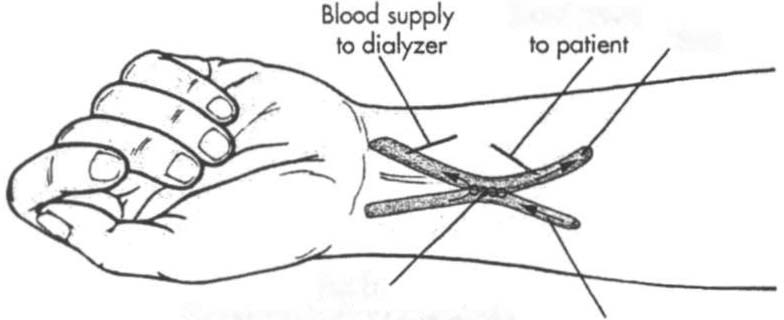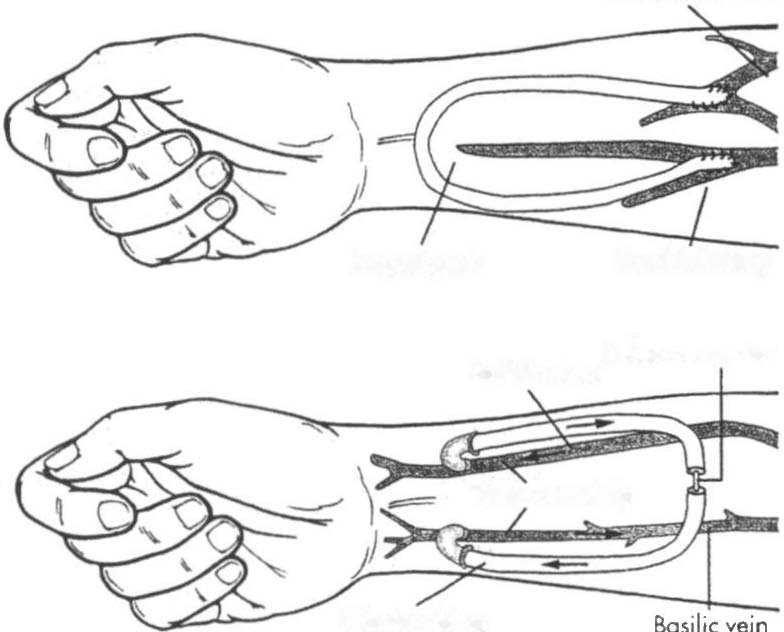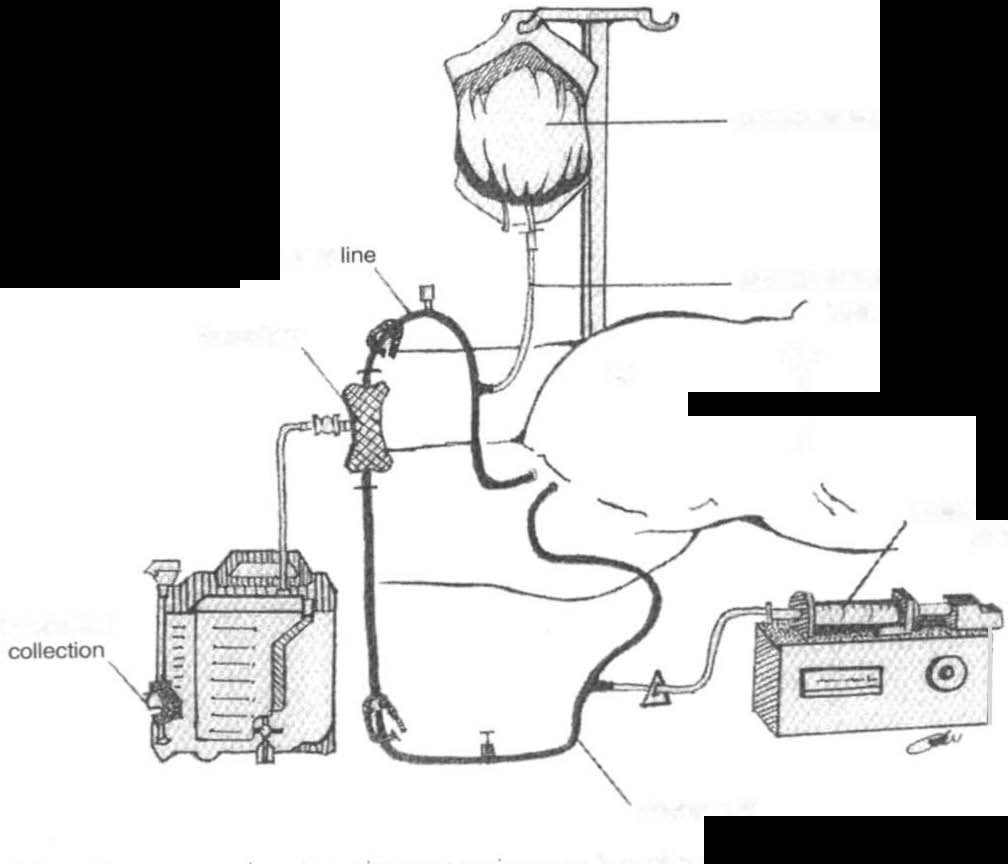i bc27f85be50b71b1 (183 page)
Read i bc27f85be50b71b1 Online
Authors: Unknown






GENITOURI ARY SYSTEM
591
Blood retvm Vein
A
Fistvlo
(Anastomosis of ortery and vein
shunting orteriol blood into vein)
Rodiol ortery
Antecubital vein
II
Looped groft
Brochiol ortery
T eRon connector
R d·
a I
10 artery
c
T eRon vessel tip
Silastic tubing
lexternol segment)
Figure 9·5. Methods of vascular access for hemodialysis. A. Internal arterio·
venous �stula. 8. Looped graft in forearm. C. External cannula or shunt.
(Wllth permission from 5M Lewis, MM Heitkemper, 5R Dirsksen {eds{. Med;·
cal·5urg;cal Nurs;ng: Assessment alld Management of Clinical Problems {5th
edt. St. LOI/IS' Mosby, 2000; 1325.}

592 AC1.JTI: CARE HANDBOOK FOR PHYSICAL THERAPISTS
Indications for hemodialysis include the following6•s:
• Acute poisoning
• Acute and chronic renal failure
• Severe states of edema
• Hepatic coma
• Metabolic acidosis
• Extensive burns with prerenal azotemia
• Transfusion reactions
• Postpartum renal insufficiency
• Crush syndrome (reduction in circulating plasma volume,
hypotension, and hemoconcentration after crush injury)
Contraindications for hemodialysis include the followings:
• Associated major chronic illnesses
• No vascular access
• Hemorrhagic diathesis
• Extremes in age
• Poor compliance with treatment regimen
Continuous Renal Replacement Therapy
The purpose of C0l1til1110llS rellal replacement therapy (CRRT) is to
provide a slow yet continuous mechanism to remove fluid and electrolytes as well as small and medium solutes from the body in a manner that mimics the natural function of the patient'S native kidney.
Because of the slow process involved with CRRT, it is frequently used
in the critical care serting to stabilize and manage patients without the
adverse effects of hypotension that can occur with intermittent hemodialysis. CRRT can be performed for as long as 30 to 40 days, with the hemofilter being changed every 1-2 days. CRRT can also be performed as an adjunct to intermittent hemodialysis. The two main types of CRRT are continuous arteriovenous hemofilrration and continuous venovenous hemofiltration.IO.15



GENITOURINARY SYSTEM
593
CAVH uses the femoral artery and vein as common sites for vascular access. Pressure gradients between the arterial and venous system along with oncotic pressures help drive the hemofiltration process,
which mimics the urine formation process in the renal glomerulus.
Heparin i infused to help prevent clotting in the hemofilter and tubing. Medications and nutrition can also be administered through the cireuit',lo." Figure 9-6 illustrates CAVH.
CWH is similar to CAVH, except that CW H only uses the
venous system as access sites for blood exchange, and without the
arterial system to drive blood flow, CWH requires a mechanical
pump to circulate the blood. CW H is sometimes preferable to
CAVH, as it is difficult to obtain and maintain arterial access for prolonged time periods."
Indications for CRRT include the following:
• Unresponsiveness to diuretic therapy
• Cardiovascular instability
• Parenteral nutrition
• Cerebrovascular or coronary artery disease
• Uncomplicated ARF
• ARF with multiple organ failure
•
Inability to tolerate hemodialysis
Contra indications for CRRT include the following:
• Hypereatabolic state
• Hyperkalemia
• Poisoning
• Shock
•
Low colloid oncotic pressure
• Congestive heart failure
• Severe arthrosclerosis
• Low blood flow (i.e., mean arterial pressure less than 60
mm Hg)

